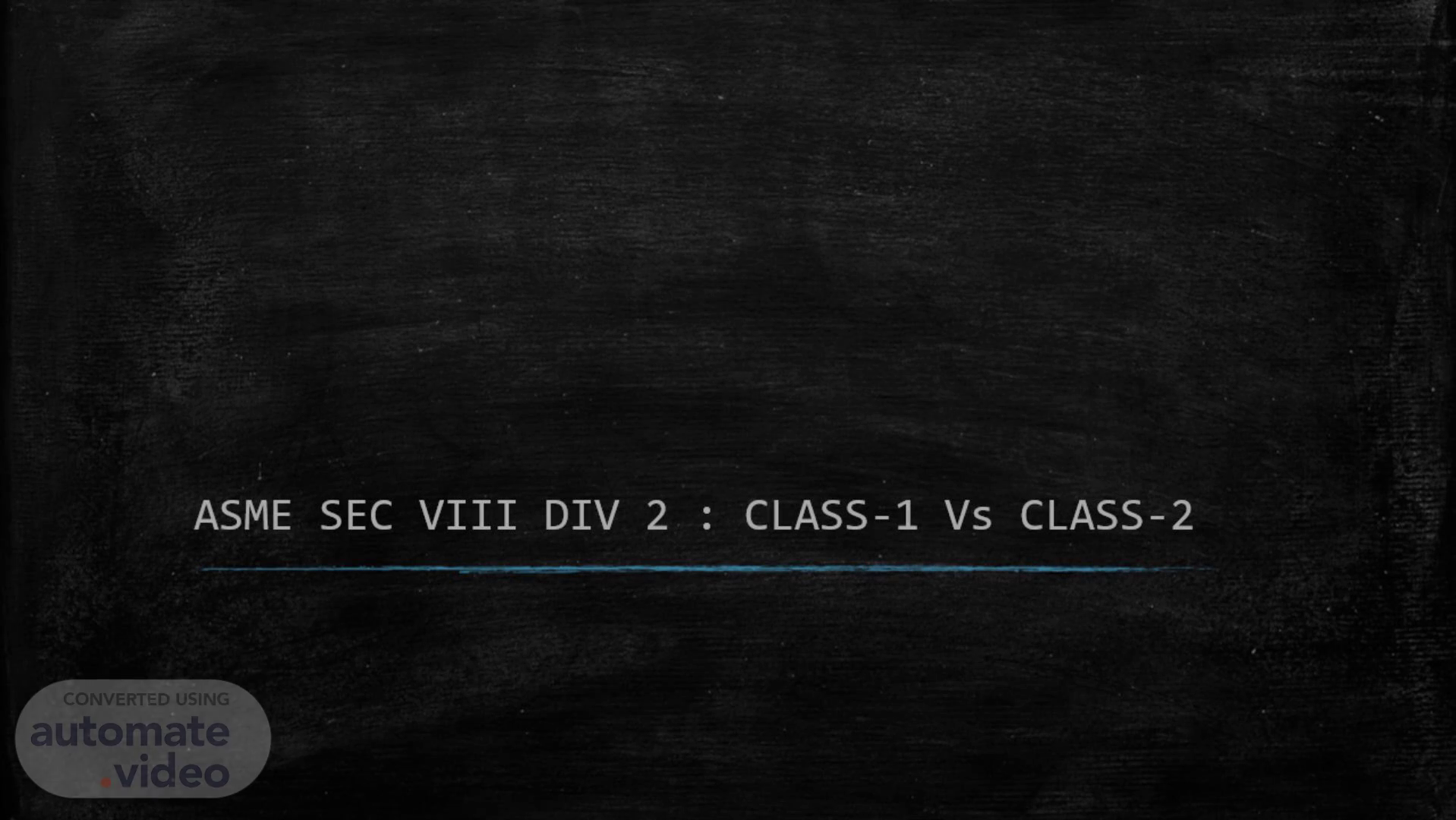
ASME SEC VIII DIV 2 : CLASS-1 Vs CLASS-2
Scene 1 (0s)
[Audio] ASME SEC VIII DIV 2 : CLASS-1 Vs CLASS-2 IMPORTANT STUDY This article presents a compilation of the differences between these two classifications. The information in this article is based on the 2019 Edition of the ASME Boiler & Pressure Vessel Code. Since the ASME Code is revised on a regular basis, the applicable edition of the Code for your pressure vessel should be consulted. Compiled by : Ag, 28-Jun-23.
Scene 2 (37s)
[Audio] Differences between Class 1 and Class 2 can be placed into four groups: Allowable stresses Design requirements Manufacturer’s Design Report (MDR) User’s Design Specification (UDS).
Scene 3 (53s)
[Audio] 1. Allowable stresses Class 2 Allowable stress values are taken from Section II, Part D, Subpart 1, Table 5A or Table 5B Design margin against ultimate tensile strength is 2.4 Design margin against yield strength is 1.5 Class 1 Allowable stress values are taken from Section II, Part D, Subpart 1, Table 2A or Table 2B Design margin against ultimate tensile strength is 3.0 Design margin against yield strength is 1.5.
Scene 4 (1m 28s)
[Audio] 2. Design requirements Class 1 Part 4 of Section VIII, Division 2 (Design by Rule) shall be used in the design of Class 1 pressure vessels. If design rules are not provided in Part 4, Design by Analysis (Part 5 ) shall be used. If Design by Analysis (Part 5) is used, all loadings specified in the User’s Design Specification (UDS) must be considered. If the component cannot be designed using Part 4 or Part 5, a design method consistent with the overall design philosophy of Class 1 and acceptable to the Authorized Inspector (AI) shall be used. The Design by Analysis rules in Part 5 cannot be used in lieu of the rules in Part 4. Class 2 Design by Analysis (Part 5) is required when design rules are not provided in Part 4. All loadings specified in the UDS must be considered. Components for Class 2 pressure vessels may be designed using a combination of Part 4 or Part 5. Part 5 (Design by Analysis) may be used to establish design thickness and/or configuration in lieu of Part 4 (Design by Rule) for any geometry or loading conditions. Thickness can be less than that determined using Part 4..
Scene 5 (2m 55s)
[Audio] 3. Manufacturer’s Design Report (MDR) Class 1 The MDR must be certified when any of the following are performed: Fatigue analysis Part 5 (Design by Analysis) is used to determine thickness of pressure parts when design rules are not provided in Part 4 A quick-actuating closure is designed using Part 4.8 A dynamic seismic analysis is performed Class 2 The MDR must be certified.
Scene 6 (3m 26s)
[Audio] 4. User’s Design Specification (UDS) Class 2 The UDS must be certified Class 1 The UDS does not have to be certified unless fatigue analysis is required..
Scene 7 (3m 43s)
[Audio] Thank you.. Thank you..